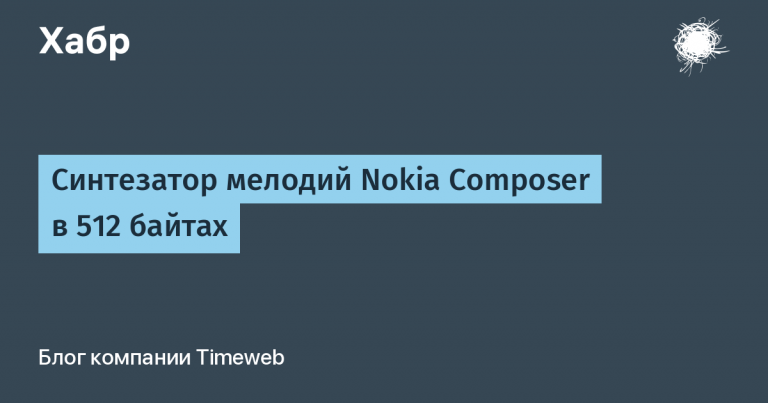Made in USSR. Soviet satellite fighter – the first in the world to intercept a target spacecraft
As soon as the Soviet Union launched the first artificial satellite into space on October 4, 1957, the United States began to think about methods of space security and war.
Scientists and engineers from the USA and USSR carried out developments in various directions, including military ones. We will talk about the 60s of the 20th century, about the times before the Americans landed on the moon.

Vladimir Chelomey, who headed the experimental design bureau No. 52, proposed to the First Secretary of the CPSU Central Committee Nikita Sergeevich Khrushchev to create a space defense for the USSR.

On June 23, 1960, Resolution of the Central Committee of the CPSU and the Council of Ministers of the USSR No. 714-295 “On the creation of rocket planes, space planes, reconnaissance satellites and homing ballistic missiles” was issued. OKB-52 was asked to develop these projects.
On August 8, 1955, the Council of Ministers of the USSR adopted a resolution on the transfer of the Reutov Mechanical Plant, which was previously engaged in the repair of agricultural machinery, to the OKB-52 enterprise. OKB-52 was transferred to the Ministry of General Engineering by Decree of the Council of Ministers of the USSR No. 126-47 dated March 2, 1965, and by order of Minister S.A. Afanasyev No. 109 dated March 6, 1966, the allied OKB-52 was given the name “Central Mechanical Engineering Design Bureau (TsKBM). On December 26, 1991, the Ministry of Industry of the RSFSR reorganized the Scientific and Production Association of Mechanical Engineering into the Scientific and Production Association of Mechanical Engineering Enterprise. By Order of the Ministry of Economy dated April 14, 1998 No. 133, the Scientific and Production Association of Mechanical Engineering enterprise was transformed into the state unitary enterprise Scientific and Production Association of Mechanical Engineering. By order of the General Director of the Russian Aviation and Space Agency dated February 1, 2001, the state unitary enterprise “Scientific and Production Association of Mechanical Engineering” was transformed into the Federal State Unitary Enterprise “Scientific and Production Association of Mechanical Engineering” (based on Decree of the Government of the Russian Federation dated 03.02.2000 No. 104).
Vladimir Chelomey, having taken up the space theme and building truly Napoleonic plans, carefully studied the initiatives of his competitors and quite quickly realized that a heavy returnable rocket plane would ultimately turn out to be more expensive and less effective than a simple disposable antisatellite.
Suborbital manned rocket plane of the “winged” design of OKB-52. Poster from the archives of NPO Mashinostroyenia.

The rocket planes of the third group, called “Winged”, looked like normal airplanes and made it possible to land in a given area regardless of the time of day. However, the main problem in their design was thermal protection, since the wing and pointed nose were subject to high thermal loads in the dense layers of the atmosphere. “Winged” rocket planes were conceived as space bombers, satellite fighters, reconnaissance aircraft and return space stations.

The R-1 unmanned rocket plane was created to test and test components in orbit – primarily, orientation and stabilization systems, thermal protection and actuation of separation devices. In addition to the listed tasks, the astronaut was also supposed to practice the procedures for monitoring equipment and observing from space on the manned rocket plane R-2.

The total mass of the R-1 and R-2 rocket planes, equipped with folding wings of variable sweep, was 6300 kg for each. The standard trajectory included an elliptical orbit with an altitude of 160×290 km; the total flight time should not exceed 24 hours.
It is interesting that from the very beginning Chelomey set before his subordinates the task of creating a spacecraft that could be controlled by an ordinary military aviation pilot, so even the flight pattern of rocket planes was optimized in such a way that the overloads in all areas did not exceed those usual for such pilots (no more than 4 g) .

The first practical step of OKB-52 into space can be considered the creation of the experimental apparatus MP-1, the development of which was “legalized” by Resolution of the CPSU Central Committee and the Council of Ministers No. 420-174 “On the development of manned rocket planes” dated May 13, 1961.
The product, 1.8 m long and weighing 1.75 tons, consisted of a container and a rear brake umbrella. The container was a cone with a large elongation, ending in a cylindrical part on which graphite rudders were installed in front. At the rear there was a brake umbrella, the individual petals of which could be deflected using pneumatic actuators. During the space phase of the flight, stabilization was provided by compressed air nozzles, which were supplied from a high-pressure cylinder that occupied the nose of the device. The landing was carried out using a three-stage parachute system, which made it possible to study the heat-protective coating after return. During the flight itself, data on the state of the MP-1 was broadcast by a radio telemetry system and recorded by storage devices.
In October 1961, the MP-1 was prepared for shipment to the Kapustin Yar test site. The launch of the experimental device took place on December 27, 1961 using a modified single-stage rocket R-12 (8K63). It flew a distance of 1,760 km at a maximum speed of 3.8 km/s, rising to an altitude of 405 km and making a controlled descent through the atmosphere. The flight objectives were completed in full, with This was the first time in world history that a winged spacecraft was launched from space.! Unfortunately, the achievement, outstanding at that time, was classified for a long time.
Political reshuffles in the leadership of the Soviet Union confused Chelomey’s cards, and his witty political move with the acceptance of Khrushchev Jr. to work in the bureau turned out to be a “broken trump card.” On October 17, 1964, immediately after Khrushchev’s removal from post, a commission was created to “investigate” the activities of OKB-52, and two days later, Marshal Konstantin Andreevich Vershinin notified Chelomey of the cessation of work and the transfer of materials on rocket planes to the bureau of Artyom Ivanovich Mikoyan. Some of the specialists involved in the R-1 and R-2 projects later went there. Attempts to appeal to higher authorities led nowhere: the new leadership of the country treated Chelomey with suspicion.
On November 1, 1963, at 11:56 a.m., a new type of satellite was launched from the Baikonur Cosmodrome, officially named “Flight-1”. It differed from its predecessors in that it could maneuver repeatedly in space, changing the altitude and inclination of the orbit on command.

The front page of the Pravda newspaper, November 2, 1963
Published official reports claimed that the launch of Polet-1 was a step towards the creation of more advanced spacecraft, but in reality its purpose was completely the opposite – the device was designed to destroy any artificial orbital objects.

Everyone knows that the Soviet artificial Earth satellite was the first. But not everyone knows that we were the first in the creation of anti-satellite weapons. The decision made to develop it was put into practice; the Polet-1 spacecraft intercepted a target spacecraft for the first time in history. And five years later, in 1972, the IS-M complex of the anti-space defense system (PKO) was put into trial operation.
The IS complex was based on a two-turn method of targeting the target. After the interceptor spacecraft was launched into orbit by a launch vehicle, the radio engineering nodes for detecting satellites OS-1 (Irkutsk) and OS-2 (Balkhash) on the first orbit clarified the parameters of its movement and targets, and then transmitted them on board the interceptor. He made a maneuver, on the second orbit, using the seeker, detected the target, approached it and hit it with a combat charge. The calculated probability of hitting a target of 0.9–0.95 was confirmed by practical tests.

Conditional diagram of the interaction of the IS system. Illustration from the book by K.A. Vlasko-Vlasov “From “Comet” to “Eye”” (2002)
The last successful interception took place on June 18, 1982, when the Cosmos-1375 target satellite was hit by the Cosmos-1379 interceptor spacecraft. In 1993, the IS-MU complex was removed from service, in September 1997 it ceased to exist, and all materials were transferred to the archive.

Interceptor “IS” in the workshop/Archival photo from the book by V.V. Sachkova “Half a century at the forefront” (2018)
Things didn't work out for Washington from the very beginning. First, the program for using an anti-satellite missile from the B-58 Hustler supersonic bomber was closed.
Then they abandoned missiles with powerful nuclear warheads after unsuccessful tests in the 60s of the last century. High-altitude explosions led to damage by electromagnetic pulses to a number of their satellites and formed artificial radiation belts.
The LIM-49 Nike Zeus missile defense project also failed. In 1966, it was replaced by Program 437 ASAT systems based on Thor missiles with a 1-megaton nuclear warhead. The project was canceled in 1975.
They also abandoned the American Navy's developments in using anti-satellite missiles from carrier-based aircraft.
In the late 1970s, a project to launch anti-satellite weapons from a modified UGM-73 Poseidon C-3 SLBM was completed.
Success in the United States was achieved in 1984 with a launch with the ASM-135 ASAT rocket. But in 1988 this program was closed too.
One of the fathers of satellite fighters, Anatoly Ivanovich Savin (04/06/1920 – 03/27/2016).
On April 6, 2024, Academician of the Russian Academy of Sciences and design engineer Anatoly Savin would have turned 104 years old.

In 1959, Anatoly Savin defended his candidate’s thesis on the topic “Study of an autonomous method of guiding flying objects with correction of their trajectory at the final stage of flight”; in 1965, he defended his doctoral thesis.

Hero of Socialist Labor, laureate of Lenin, three Stalin and one State Prize of the USSR. He was awarded four Orders of Lenin, three Orders of the Red Banner of Labor, the Order of the Patriotic War, II degree, and many other awards and titles. In the last years of his life, he headed the management of the scientific and technical department of the Almaz-Antey concern, the largest manufacturer and exporter of weapons in the Russian Federation, as well as the 7th military enterprise in the world according to the results of 2015.





